Computer performance can be affected by memory capacity, input/output devices and speed of the central processing unit (CPU). Other factors that can affect performance include RAM size and disk speed. Spywares and viruses are also causes of a slow computer. These spyware programs are known as malicious programs that attach themselves to the back of your computer so that the developer of the spyware/virus can monitor your internet activity. Installing a good anti-spyware/antivirus program will prevent the malicious spyware from monitoring your computer activity and also speed up you computer performance.
Having a cluttered hard disk is another factor that can really slow your computer down as it is packed with unnecessary files. With a few simple tips that will describe how to use the maintenance functions that your PC offers through Windows, you will be able to speed up your computer and have it function at top performance.
#1. Run Disk Cleanup
To run Disk Cleanup in Windows 7 and Windows Vista, follow these steps:
1. From the Start button menu, choose All Programs > Accessories > System Tools > Disk Cleanup.
In Windows Vista, choose the option My Files Only.
In Windows 8, search for - Free up disk space by deleting unnecessary files
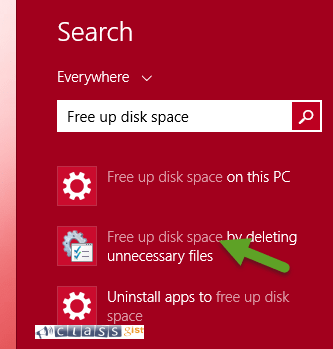
2. If prompted, choose the mass storage device that you want to clean up.
3. The prompt appears only when you have multiple storage media on your PC. You probably want to choose drive C, the main storage device.
4. Select the drive C on the computer for Disk Cleanup.
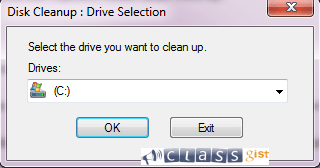
This might take a while for the computer to scan that hard drive.
5. Once the computer has finished searching the hard drive for all files that could be removed, tick the checkbox by all the unnecessary items you want to remove.
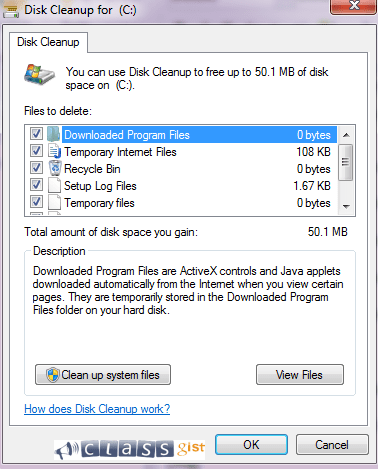
6. Click OK.
#2. Delete Temp Folder
Temp folder contains files that are only needed temporally. Unfortunately, these files don't always get deleted after their job is done, resulting in wasted drive space.
To delete the temp folder, follow these steps:
1. Click on Start button, type the following command %temp% in the search box, and then hit the Enter key.
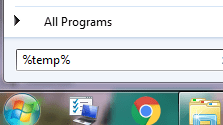
This command will open the folder that Windows has designated as the Temporary folder. These are folders and files that Windows needed at one time but are no longer useful. Everything in this folder is safe to delete.
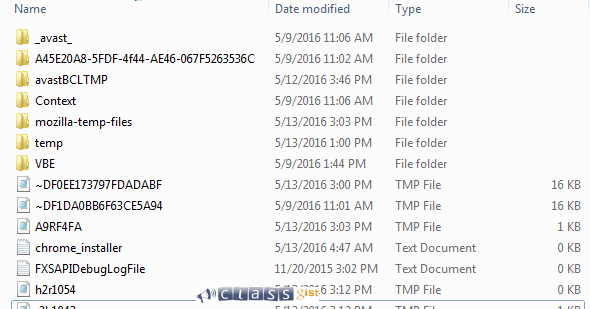
2. Press Ctrl + A on your keyboard to Select All the items OR Click on the Organize button and then choose Select All from the menu.
Note: If you're prompted that there are hidden files in this folder, just click on OK to bypass the message. A few hidden files hanging out in the Temp folder probably aren't important enough to worry about.
3. Hit your Delete key or click the Organize button on the toolbar menu, followed by the Delete
You will probably be prompted again to confirm that you wish to Delete Multiple Items. Click on Yes to confirm.
4. After all of the files have been deleted you can close the folder window and empty your Recycle Bin, permanently removing the files from your PC.
Note: You may receive an Error Deleting File or Folder message while the files are being deleted. This just means that one of the files is in use by a program right now. Click OK, close all open programs, and repeat the steps above. If you still receive the message, try restarting your PC and repeating the process again.
#3. Defragment your hard drive
Defragmenting your hard drive will speed up disk performance.
1. Open the Computer window.
2. Right-click the media you want to defragment, such as the main hard drive, C.
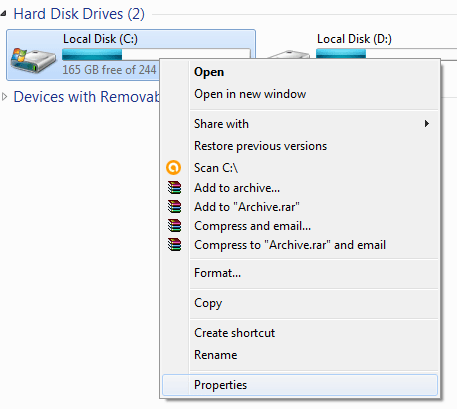
From the options, select Properties
3. In the drive’s Properties dialog box, click the Tools tab
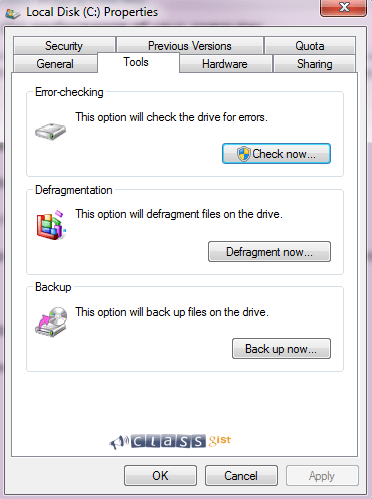
4. Click the Defragment Now button.
The Disk Defragmenter window appears. Rather than waste time defragmenting a drive that doesn’t need it, check the media’s current fragmentation.
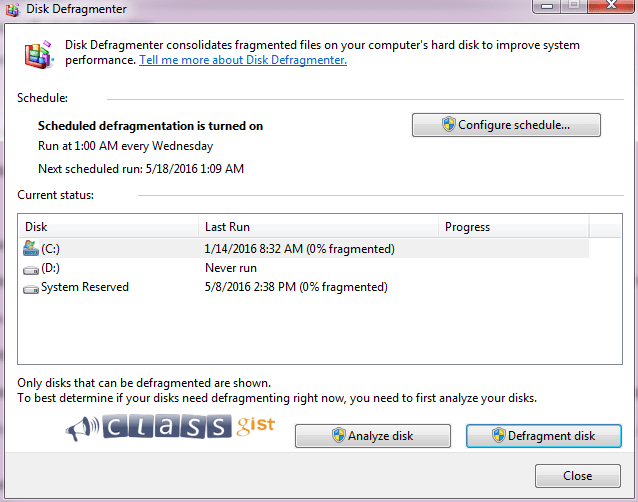
5. Click the Analyze Disk button.
6. Wait while Windows checks the defragmentation on the media.
Check the Percent Fragmented value by the disk in the Disk Defragmenter window. If it’s zero, there’s no point in continuing: Skip to Step 8.
Even when the drive shows 0 percent fragmented files, you can still proceed with defragmentation. No media can be fully defragmented, so the Windows Defragmenter will always find something to do.
7. Click the Defragment Disk button.
The computer will now be consolidating fragmented files on the computer's hard drive. This might take a while. You can do something else, though you shouldn’t do anything on your computer while the media is being defragmented.

8. Click the Close button, and close up any other windows you opened.
You may not notice any drastic improvement in disk performance, especially when the hard drive is frequently defragmented.
Few points to note
a. You cannot defragment a network drive.
b. Do not defragment a media card or flash drive.
c. Optical drives cannot be defragmented.
#4. Scan your computer with an Anti-virus software
Follow these steps to scan your entire computer for viruses:
1. Double-click or right-click the Antivirus System Tray icon; navigate to scan, and go!
2. In Windows Explorer, right-click a file or directory and select Scan.
To be certain your computer is virus-free you need to regularly run the following antivirus chores:
3. Check every day to make sure your antivirus program is running by checking the system tray for the antivirus program icon.
4. Scan your entire computer weekly for viruses, and confirm that the scan has completed. Check the status to see if any infected files were found. If you're running scans automatically, check to make sure it actually ran.
Conclusion
These maintenance tips should be done regularly to improve your computer's performance.